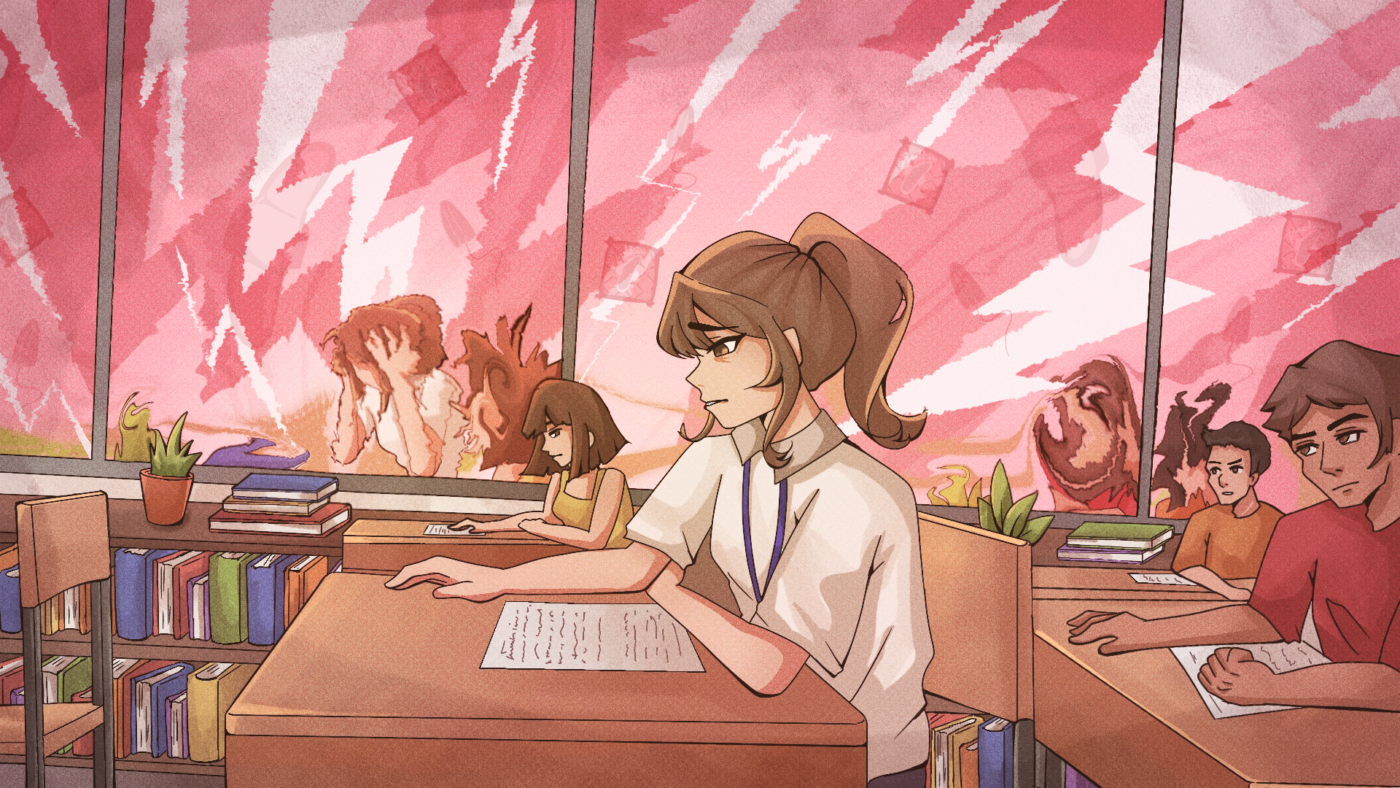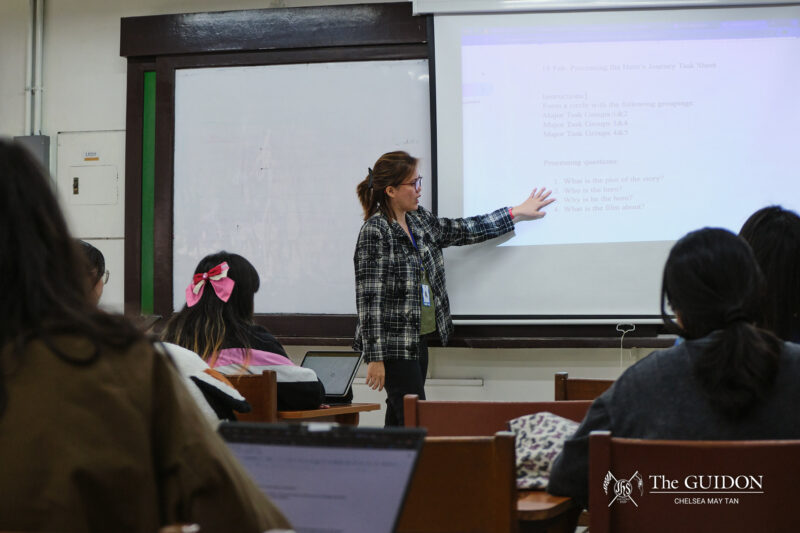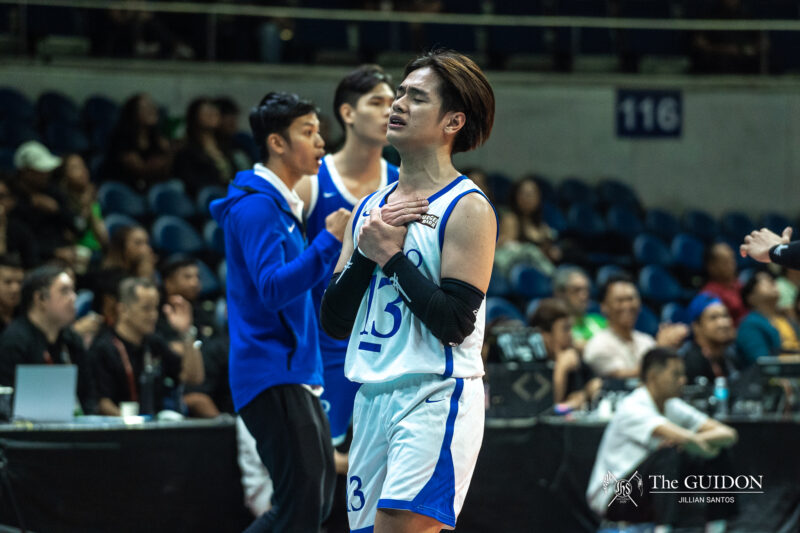FROM A persisting ache in one’s abdomen to other uterine conditions, menstrual pain manifests in many forms and spaces. While menstruating is a natural process for women, discussions surrounding period pains are often dismissed because of social embarrassment and cultural myths.
With such stigmas and existing rigid policies in the Ateneo, students are challenged to overcome the biological struggles of womanhood while grappling with academic demands.
Tracking the cycle
The common struggles of period pains begin with immeasurable discomforts that vary from one woman to another. For Ferdie*, she nearly fainted in a school bathroom stall in her freshman year due to the severity of her period pains.
Despite the difficulties she faced in managing these aches, Ferdie was determined to recover quickly and return to her academics. “I try to not make [my period pains] affect my lifestyle, but it really is [disruptive] most of the time that it occurs,” she shared.
She highlights that her pain would often scale up to an eight out of ten, with the irregularity of her period and her hyperacidity exacerbating her condition.
Office of Health Services Medical Director Ma. Henrietta O. de la Cruz, MD explains that some period pains are more severe than others due to secondary dysmenorrhea, wherein menstrual pain is caused by an existing disease or disorder.
Dr. de la Cruz specifies that some women experiencing dysmenorrhea have an underlying diagnosis of more chronic conditions such as Endometriosis. This finding is true for Christiana Sofia Navarro (3 BS PSY), who had to file for a Leave of Absence due to the severity of her condition.
Before entering college, Navarro was diagnosed with Endometriosis, Adenomyosis, and Polycystic Ovary Syndrome (PCOS). These conditions cause her uterus to excessively bleed internally and externally, forming small lesions on her other organs in her lower digestive tract.
Ever since her first period at 10 years old, Navarro would always be under debilitating and constant pain, experiencing immense blood loss that would frequently make her blackout. With this sheer intensity of pain in the lower half of her body, Navarro would sometimes need to use a wheelchair and walking cane to school to aid her mobility.
Amid these experiences, Navarro’s conditions are often misunderstood. She particularly recalls an instance when her professor had simply reduced her pains to regular period discomfort.
“There’s a certain point I guess where [my condition] stops being period pains or dysmenorrhea and just starts being chronic pain because […] it just never really goes away,” she differentiates. In this regard, she exemplifies that her pain could even be compared to appendicitis in intensity.
Marking red days
Due to the discomfort brought by these uterine conditions, Ferdie and Navarro often have to request special accommodations.
When Ferdie was in pain, she had to ask for make-up sessions from her Physical Education professor to catch up on her missed exercises. However, there are some instances when such accommodations are not enough and students would have to take absences to relieve the aches brought by their periods or conditions.
With Ateneo’s current cut policy declaring no distinction between excused and unexcused absences, students are required to secure a medical certificate for their excuse to be recognized as valid.
Ferdie finds these certificates hard to acquire, especially for period pains, which cannot be certified on their own and are only often acknowledged through other symptoms, such as hyperacidity. Dr. de la Cruz expounds that since periods are usually considered normal phenomena, there is no “objective” way or “test” for quantifying its pains.
While a medical certificate is intended to verify a student’s condition, Navarro argues that some professors still doubt its legitimacy due to students taking advantage of the previous unlimited excused cuts policy implemented after the pandemic.
Due to the limitations of the current policy, Navarro developed a mentality that she had to save her cuts, worrying about needing to use these for eventual hospitalizations.
In cases of overcuts, Navarro explains how accommodations are dependent on each professor, with some being more flexible than others and no longer minding her cuts. Meanwhile, some professors still strictly abide by the cut system, leaving Navarro with no choice but to withdraw, resulting in her being delayed.
However, in times when her situation becomes dire due to her uterine conditions, she approaches “higher” offices such as the Office of the Associate Dean for Academic Affairs. Upon approaching these offices, Navarro was told that the “best course of action” for her would simply be to leave Ateneo and come back when she is healed, insisting that her condition would have a cure.
“It’s so disheartening to see that for a school who preaches […] progressiveness and inclusivity, they can say things that alienate students from the so-called demographics they claim to stand for,” she says.
Aching beliefs
With repeated instances of distrust and dismissive statements from school officials, Navarro often feels waves of self-doubt, leading her to believe that her experiences are invalid and forcing her to adjust in her own capacity.
Due to this doubt, students often endure their painful experiences and force themselves to come to school. Ferdie explains that she would refrain from telling her professors about her discomfort, fearing it would not be considered a valid excuse.
Similarly, Navarro shares that there were even times when she became “desensitized” to the pain to the point of going to school despite her legs shaking.
Their mentality stems from the existing stigmas and notions surrounding menstruation. For one, Ferdie used to believe that she did not need any help with her period pains because her female peers regarded it as “normal” and unnecessary for special care.
Affirming this, Navarro notices that even female professors still have this mindset when handling certain situations, asserting “Kinaya ko, ba’t ‘di niyo kinakaya?” (I overcame it, so why can’t you?).
Navarro emphasizes her concern, “It’s […] so sad for you to think [that] these tragedies are just part of your womanhood when in reality, they are problems that should have been addressed.”
This belief is translated on a national scale with bills, such as House Bill 7758 or the Menstrual Leave Act which remains unpassed despite being meant to grant employees monthly menstrual leave with full remuneration.
Despite these setbacks, Navarro acknowledges that there is increasing awareness and empathy with each generation. For instance, menstruation-induced pain was recently approved as a valid reason for absence at De La Salle University.
While a similar level of awareness is present in the Ateneo, Ferdie and Navarro both believe that the Ateneo could improve in accommodating period pains and uterine conditions in its existing services and policies.
They recognize that the problem lies in how deeply people empathize with the struggles that come along with these pains, and how well-translated University services are for students. Thus, both Navarro and Ferdie hope to see more streamlined accommodations and nuanced rules on excused and unexcused absences.
With current policies perpetuating existing stigmas, the Ateneo is challenged to create more understanding and inclusive initiatives that foster safer and more progressive spaces for women.
*Editor’s Note: The name of the interviewee has been changed to protect their identity and privacy.







